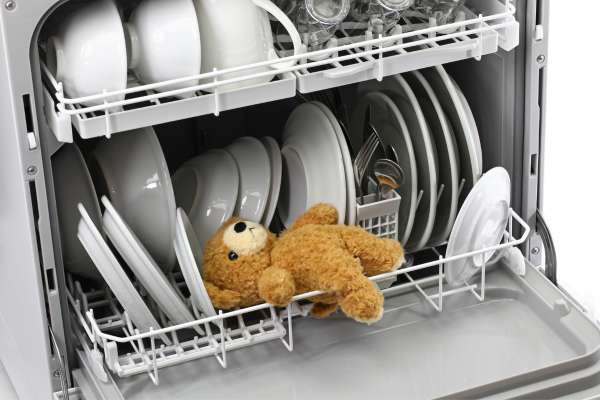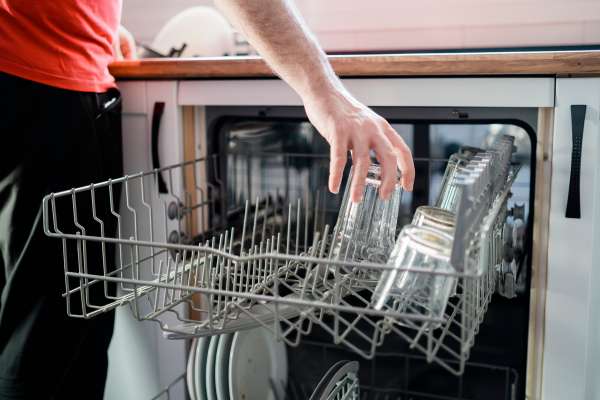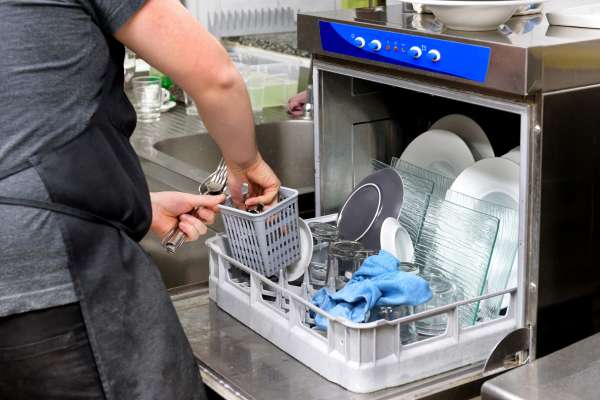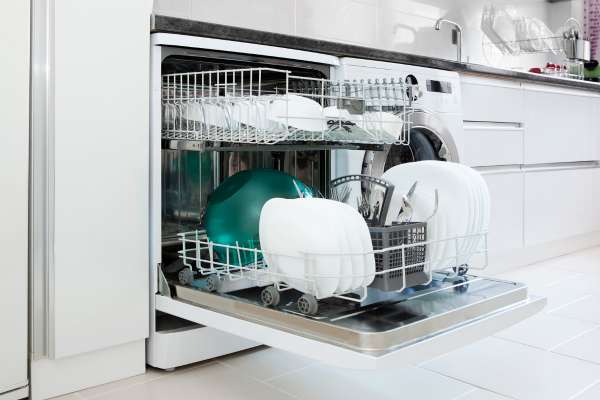Mastering the art of loading a dishwasher is key to ensuring your dishes emerge spotless while optimizing appliance efficiency. In this guide on “How to Load a Dishwasher,” we will explore essential techniques that maximize every cycle’s effectiveness, from arranging plates and glasses to selecting the best dishwasher settings for various types of loads. Whether you’re a meticulous home chef or a busy parent, these tips will help you enhance your dishwasher’s performance, save energy, and extend its lifespan. Keep reading to discover the secrets behind perfecting your dishwasher loading strategy and achieving pristine results with every wash.
Preparation and Preloading
Loading your dishwasher begins with understanding whether to pre-rinse your dishes. Modern dishwashers are designed to handle even the toughest of residues, making pre-rinsing often unnecessary. This not only saves water but also allows the detergent to work more effectively by adhering to food particles. However, scraping off large food scraps is crucial to avoid clogs and ensure your machine runs smoothly. By aligning with your dishwasher’s capabilities, you can streamline your dishwashing process, reduce water usage, and achieve optimal cleaning results. Embrace these preloading practices to make the most of your appliance’s technology and environmental efficiency.
Items That Should Never Go in Your Dishwasher

Certain items can spell disaster for both your dishwasher and the objects themselves. Wooden utensils should be hand-washed, as the dishwasher’s heat can warp and crack them. Similarly, non-dishwasher safe plastics can melt or deform, potentially releasing harmful chemicals and ruining your appliance’s efficiency. Delicate china, crystal, and certain types of metal objects, like cast iron or copper pans, are also at risk of damage from the intense environment inside a dishwasher. Always check for a dishwasher-safe label to ensure the longevity of your dishes and the appliance itself, keeping your kitchen safe and your items in top condition.
The Correct Way to Load Plates and Bowls
Loading plates and bowls in your dishwasher correctly is essential for achieving the cleanest results. Arrange plates in the bottom rack, spacing them evenly and angling them downward to allow water and detergent better access to their surfaces. Bowls should be placed on the top rack, ideally tilted to prevent pooling water. This setup ensures each item is exposed adequately during wash cycles, maximizing both space and the effectiveness of the cleaning process. Adopting this method not only improves cleanliness but also enhances the efficiency of each dishwasher load, saving water and energy.
Best Practices for Loading Cups and Glasses

Ensuring that cups and glasses come out of the dishwasher spotless and intact requires some strategic loading techniques. Start by placing cups and glasses on the top rack to avoid the powerful jets of the bottom rack, which can lead to breakage. Angle them slightly downward to facilitate water runoff, preventing water spots and residue buildup. It’s crucial to space them apart adequately to avoid clinking during the wash cycle, which can cause cracks or chips. Also, avoid nesting glasses too tightly together, as this can restrict water and detergent from reaching the interior surfaces. By following these simple practices, you’ll achieve a thorough clean and keep your glassware in pristine condition.
Where and How to Load Larger Utensils
Loading larger utensils such as pots, pans, and baking sheets in your dishwasher requires a strategic approach to ensure they don’t obstruct the spray arms, which is vital for achieving a thorough clean. Place these bulky items on the bottom rack, positioning them so they face downwards and towards the center. This orientation allows water jets to access the inside surfaces and provide effective clea
Utilizing Cutlery Baskets Effectively

Maximizing the efficiency of your dishwasher involves more than just stacking dishes. When it comes to cutlery, place forks and spoons in the basket with handles down to expose the eating ends to more intense cleaning, while knives should be placed handle up for safety. For odd-shaped items that don’t fit neatly on the racks, many dishwashers offer adjustable racks and fold-down tines. Adjust these features to secure larger or awkward items, ensuring they stay in place without blocking water jets. Proper positioning not only leads to better cleaning results but also protects your dishes and Dish cleaning machine from damage during the cycle.
Dishwasher Settings

Selecting the right dishwasher settings is crucial for maximizing the efficiency of each wash while accommodating different types of loads. Familiarize yourself with the various cycles your Dish cleaning machine offers, such as heavy for pots and pans, normal for regular loads, and eco-friendly options that save water and energy for lightly soiled dishes. Utilizing a rinse cycle can be beneficial for a quick wash if dishes will sit in the machine for a while. For delicate glassware, many dishwashers feature a gentle cycle that minimizes the risk of damage. By matching the correct settings to your specific load, you ensure optimal cleaning results and preserve the longevity of your dishwasher.
Maintenance for Optimal Performance
Maintaining your Dish cleaning machine regularly is essential for optimal performance and efficiency. To ensure your machine runs smoothly, make it a routine to clean the filter and inspect the spray arms for any clogs, as these can significantly impact cleaning effectiveness. Additionally, embrace environmentally friendly practices by running full loads and selecting energy-efficient cycles. This not only conserves water and energy but also reduces wear and tear on your dishwasher, extending its lifespan. By dedicating time to these simple maintenance tasks, you’ll keep your Dish cleaning machine in top condition and contribute to a more sustainable household.
Energy Efficiency Tips
Maximizing the energy efficiency of your dishwasher not only conserves resources but also reduces your utility bills. To achieve this, always run your dishwasher with a full load, as this optimizes water and energy usage per dish cleaned. Additionally, opt for eco-friendly cycles, which are designed to use less water and energy while still providing effective cleaning. These settings often involve lower temperatures and longer washing times, which can significantly lower your Dish cleaning machine environmental impact. Implementing these practices ensures that you make the most out of every wash cycle, making your kitchen routine more sustainable and cost-effective.
Detergent Use and Safety

Choosing the right detergent and using the correct amount are crucial for the effectiveness and safety of your dishDish cleaning machine washer. Opt for detergents that offer a powerful clean without harsh chemicals, which can be safer for your dishes and gentler on the environment. Measure the detergent according to the manufacturer’s instructions to prevent residue on your dishes and reduce waste. Additionally, consider environmentally friendly detergents that are biodegradable and phosphate-free to minimize your ecological footprint. By being thoughtful about the detergent you use and how much you use, you can ensure your dishes come out sparkling clean while also caring for the planet.
Conclusion
Mastering “How to Load a Dishwasher” can transform your cleaning routine, ensuring spotless dishes and a longer-lasting appliance. By following the outlined best practices—such as proper detergent use, strategic dish arrangement, and routine maintenance—you’ll achieve optimal cleaning results while conserving energy and water. Loading a Dish cleaning machine isn’t just about stacking dishes; it’s about creating an efficient process that saves time and enhances performance. Incorporate these tips into your daily routine, and enjoy hassle-free dishwashing with every cycle. Remember, a well-loaded Dish cleaning machine works smarter, not harder, keeping your kitchen running smoothly. Share these insights to help others simplify their Dish cleaning machine experience too!

